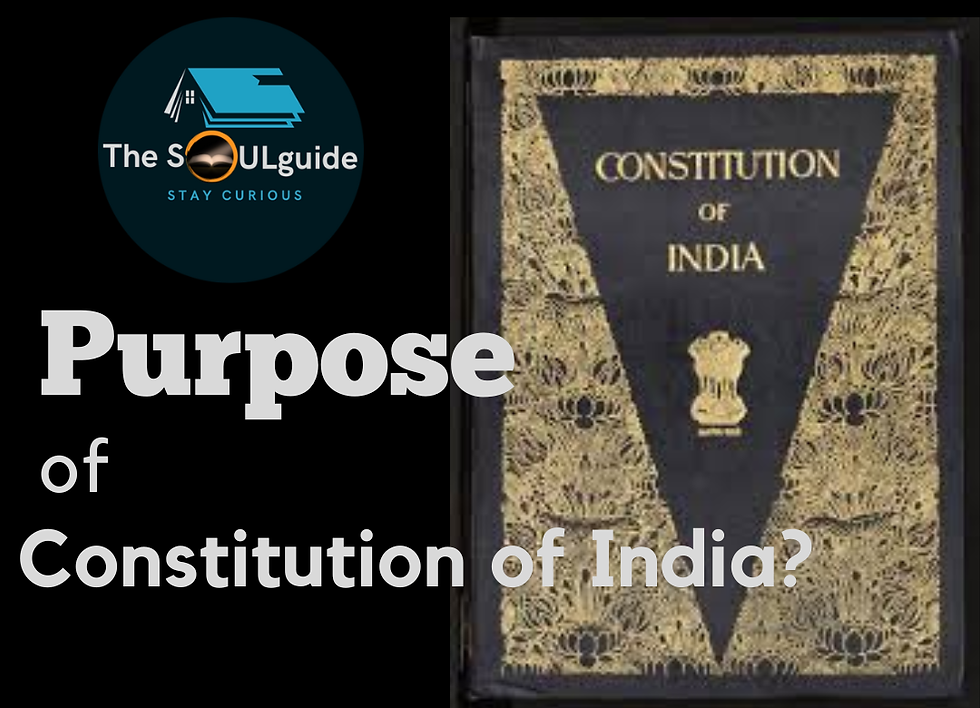What is Mahakumbh? Key differences between the Kumbh and Mahakumbh?
- TheSoulGuide

- Jan 14
- 2 min read
Mahakumbh Mela, recognized as one of the most significant and revered assemblies in Hinduism, takes place every twelve years. In 2025, a multitude of devotees gathered in Prayagraj, Uttar Pradesh, to engage in this momentous occasion. Participants had the chance to attain spiritual purification by performing a ritual bath at the Triveni Sangam, the confluence of the Ganga, Yamuna, and the legendary Saraswati rivers. Let's understand what is kumbh and what is Mahakumbh? What devotees do in these days?

The term "kumbh" in Sanskrit translates to pitcher or pot. According to legend, during the churning of the ocean by the Devas (gods) and Asuras (often referred to as demons), Dhanvantri emerged with a pitcher containing amrita, the elixir of immortality. To prevent the Asuras from obtaining it, Jayant, the son of Indra, fled with the pot. He was accompanied by the Sun, his son Shani, Brihaspati (the planet Jupiter), and the Moon for protection.
As Jayant fled, the amrita spilled at four locations: Haridwar, Prayagraj, Ujjain, and Nashik-Trimbakeshwar. His journey lasted 12 days, and since one day for the Devas equates to one year for humans, the Kumbh Mela is celebrated at these sites every 12 years, determined by the positions of the Sun, Moon, and Jupiter.
Prayagraj and Haridwar also host the Ardh-Kumbh (where "ardh" means half) every six years. The festival that occurs every 12 years is known as the Poorna Kumbh or Maha Kumbh.
All four locations are situated along riverbanks: Haridwar by the Ganga, Prayagraj at the confluence of the Ganga, Yamuna, and the mythical Saraswati, Ujjain by the Kshipra, and Nashik-Trimbakeshwar by the Godavari.
It is believed that immersing oneself in these rivers during the Kumbh, particularly during the specific celestial alignments, cleanses one of sins and bestows spiritual merit (punya).
Kumbh Melas also serve as a gathering place for Sadhus and other holy figures, with the sadhu akhadaas drawing significant interest, allowing ordinary individuals to meet and learn from them.
The location of the Kumbh Mela is determined by astrological calculations. One of the reasons for the 12-year interval between Kumbh Melas is that Jupiter takes 12 years to complete one orbit around the Sun.
As stated on the Kumbh Mela website, the event is conducted at Haridwar when Jupiter is positioned in Aquarius (Kumbh rashi, symbolized by the water bearer), while the Sun and Moon are located in Aries and Sagittarius, respectively.
When Jupiter is situated in Taurus, and the Sun and Moon are in Capricorn (Makar), the Kumbh Mela takes place at Prayag, coinciding with the Makar Sankranti festival.
In instances where Jupiter is in Leo (Simha) and the Sun and Moon are in Cancer, the Kumbh Mela is celebrated at Nashik and Trimbakeshwar, which is why this event is also referred to as the Simhastha Kumbh.
Mahakumbh and Kumbh Mela Key Differences
Aspect | Kumbh Mela | Maha Kumbh Mela |
Frequency | Every 4 years | Every 12 years |
Locations | Rotates among Prayagraj, Haridwar, Nashik, Ujjain | Exclusive to Prayagraj |
Scale of Attendance | Millions | Tens of millions, even more significant |
Spiritual Significance | Cleansing of sins, blessings of the divine nectar | Amplified spiritual benefits due to its rarity |
stay tuned for more.
Get membership to feature your article. Check here.




Comments